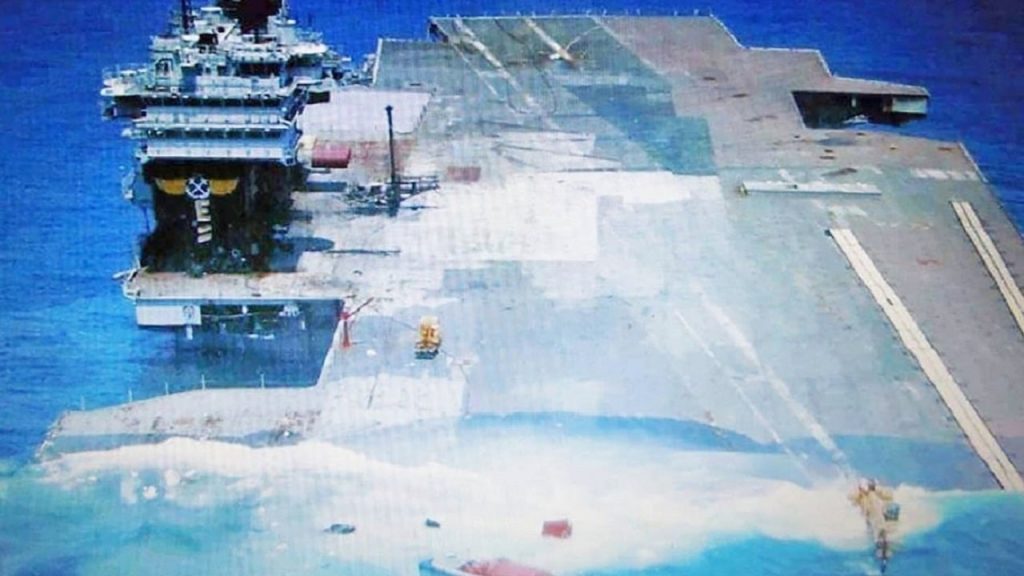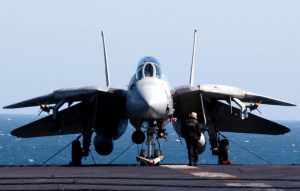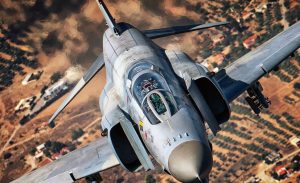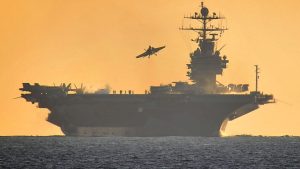The Navy didn’t really know how much punishment the USS America could endure. Blasts hit the carrier in a process that took four weeks.

The death of USS America: In what was likely horrifying to sailors and onlookers who did not know the full story, the USS America (CV-66) aircraft carrier once actually sunk. It wasn’t from enemy fire or torpedoes; it was a test to see how such a large ship could withstand an attack from adversaries. The sinking happened in 2005 and the ship slipped 17,000 feet below onto the floor of the Atlantic Ocean after weeks of explosions. This was an intentional scuttling in an effort to collect data on how a carrier can take a punch.
The America is the only super carrier to have ever sunk – due to enemy action – or due to premeditated efforts. The America had been decommissioned since 1996 due to post-Cold War budget constraints. The Navy needed information on how to proceed with building future carriers. Evaluators wanted to determine the strengths and weaknesses of a large ship during combat. Testing a planned sinking could provide lessons learned for the newer nuclear-powered Nimitz-class carriers.
The conventionally-powered America served for 31 gallant years during Vietnam and Operation Desert Storm, and other conflicts. While fighting in Vietnam, the ship could carry 79 aircraft such as the F-4 Phantom, the A-6 Intruder, and the A-7 Corsair II. The America served three tours off the coast of Vietnam running sorties around the clock. During the Reagan administration, the America spent time in the Mediterranean supporting the conflict in Libya by eliminating Libyan air defense systems and ships. In the First Gulf War, the USS America delivered 3,000 sorties. It ended a sterling service record by enforcing no-fly zones over Iraq and supporting operations in Bosnia.
It wasn’t going to be easy to intentionally scuttle such an historic ship in what was called a SINKEX operation. The War Zone noted how the Navy pressed on with its idea to force the sinking of the America.
1945’s Harrison Kass uncovered this telling quote from Vice Chief of Naval Operations Admiral John Nathman. The admiral said in 2005, “USS America will make one final and vital contribution to our national defense, this time as a live-fire test and evaluation platform. America’s legacy will serve as a footprint in the design of future carriers—ships that will protect the sons, daughters, grandchildren and great-grandchildren of American veterans. We will conduct a variety of comprehensive tests above and below the waterline collecting data for use by naval architects and engineers in creating the nation’s future carrier fleet. It is essential we make those ships as highly survivable as possible.”
This SINKEX was a different type of mission. The Navy didn’t really know what to expect or how much punishment the carrier could endure. The ship was towed 300 hundred miles off the Virginia coast and then the controlled explosions started. Blasts continually hit the carrier in a process that took four weeks. Aircraft carriers have many berths and compartments, so it took a long time for the water to penetrate the ship.
What does that mean for today’s carriers? China has carrier-killing missiles that could challenge the Navy’s dominant flat-tops. But their warheads would likely not create the type of explosions that would immediately sink such a large vessel. This would give the navy time to react, conduct damage assessment and repairs, and hopefully move the ship out of harm’s way and transfer sailors to another ship.
But a sinking of a carrier does strike fear into the hearts of many sailors and Navy brass. New supercarriers such as the Gerald R. Ford undergo shock trials to simulate combat strikes on the ships. Let’s hope the Ford can survive any missile hits against it and that no other carrier is ever scuttled at the hands of the U. S. Navy.






